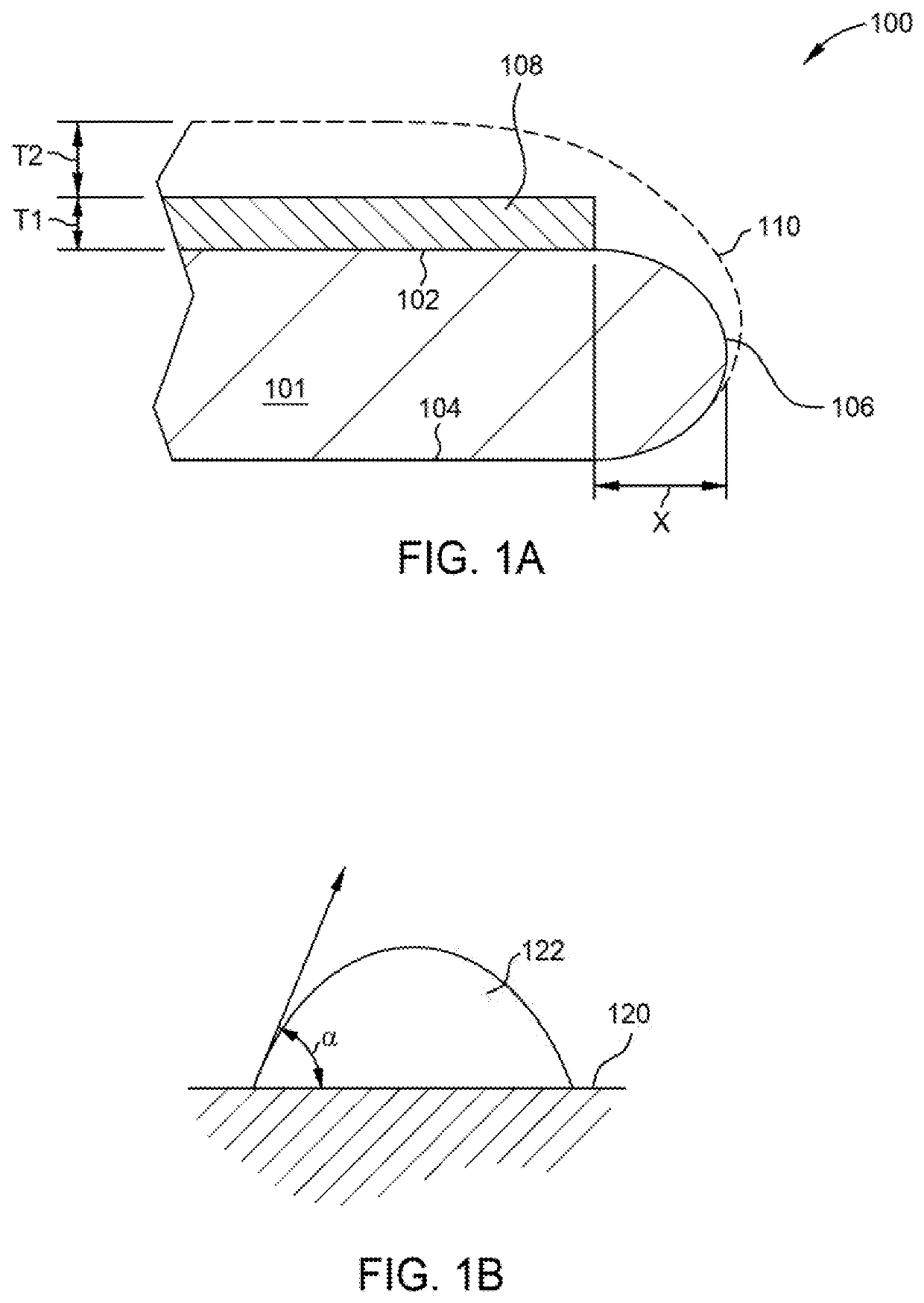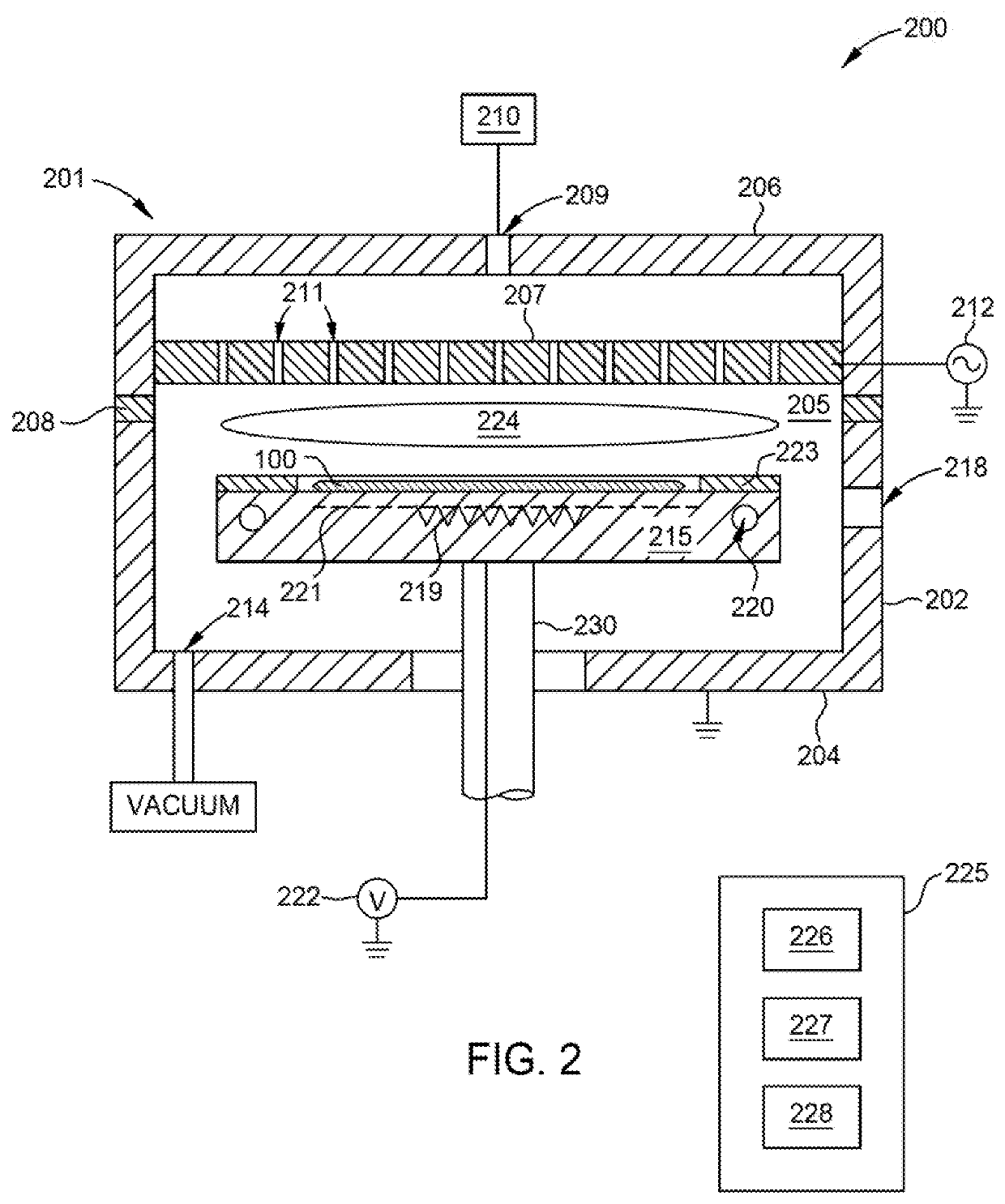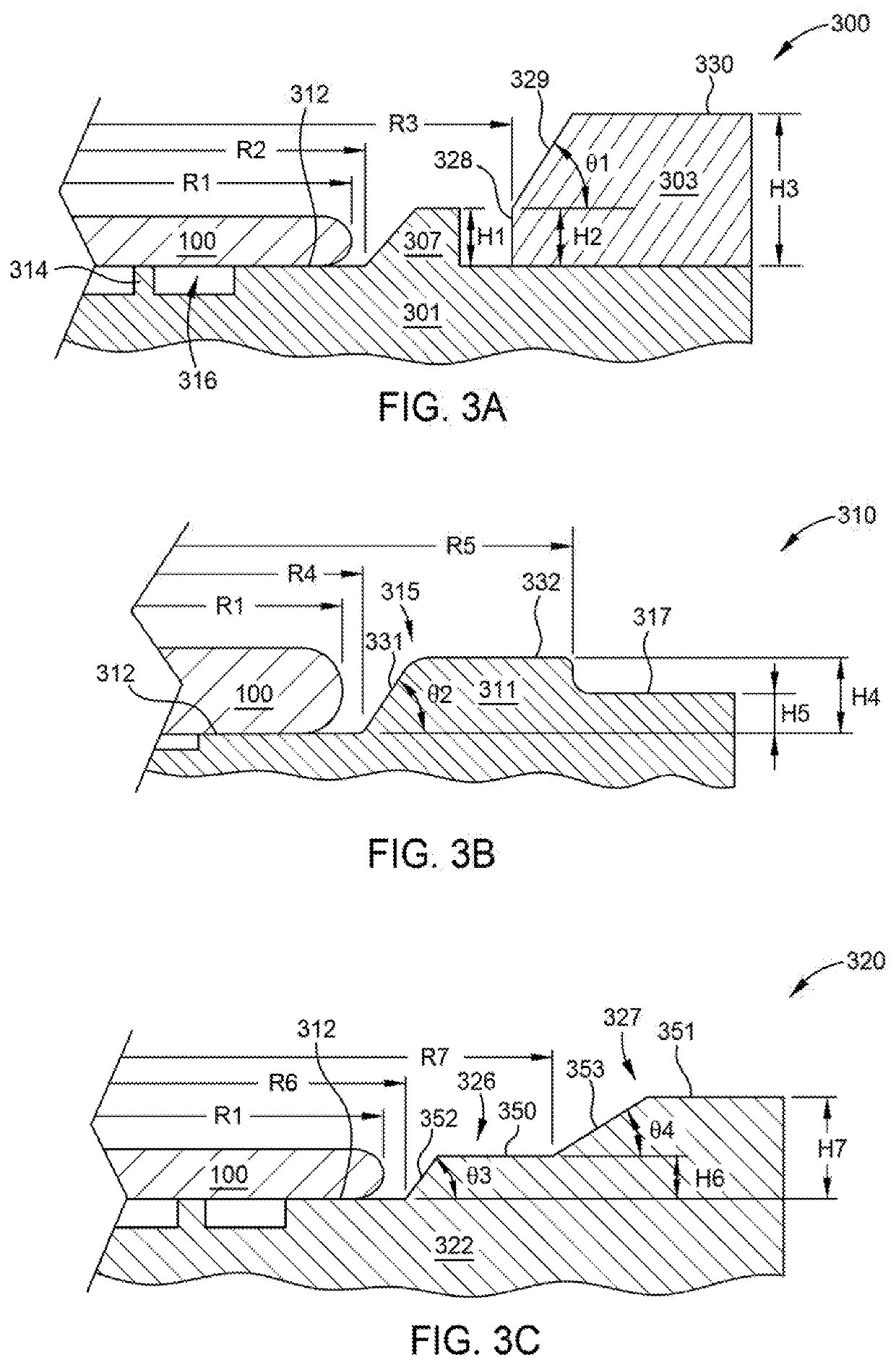Bevel peeling and defectivity solution for substrate processing
- Summary
- Abstract
- Description
- Claims
- Application Information
AI Technical Summary
Benefits of technology
Problems solved by technology
Method used
Image
Examples
Embodiment Construction
[0019]Embodiments herein relate to methods and apparatus for reducing or substantially eliminating post deposition material delamination from the bevel surfaces of a substrate (bevel peeling) thus reducing or substantially eliminating particulate defectivity associated therewith. Generally, the methods include pre-treating the substrate surface and more particularly, a bevel edge of the substrate surface, prior to a material deposition process to improve adhesion between the subsequently deposited material layer and the bevel edge surfaces. In some embodiments, the methods incorporate hardware configurations, e.g., substrate support assemblies, which prevent or substantially reduce undesired material deposition on the circumferential edge of substrate. In some embodiments, the methods and hardware configurations are used, alone or in combination, to reduce and / or substantially eliminate delamination of carbon hard mask material from the bevel edge of a substrate. For example, in som...
PUM
| Property | Measurement | Unit |
|---|---|---|
| Temperature | aaaaa | aaaaa |
| Time | aaaaa | aaaaa |
| Angle | aaaaa | aaaaa |
Abstract
Description
Claims
Application Information
 Login to View More
Login to View More - R&D
- Intellectual Property
- Life Sciences
- Materials
- Tech Scout
- Unparalleled Data Quality
- Higher Quality Content
- 60% Fewer Hallucinations
Browse by: Latest US Patents, China's latest patents, Technical Efficacy Thesaurus, Application Domain, Technology Topic, Popular Technical Reports.
© 2025 PatSnap. All rights reserved.Legal|Privacy policy|Modern Slavery Act Transparency Statement|Sitemap|About US| Contact US: help@patsnap.com



